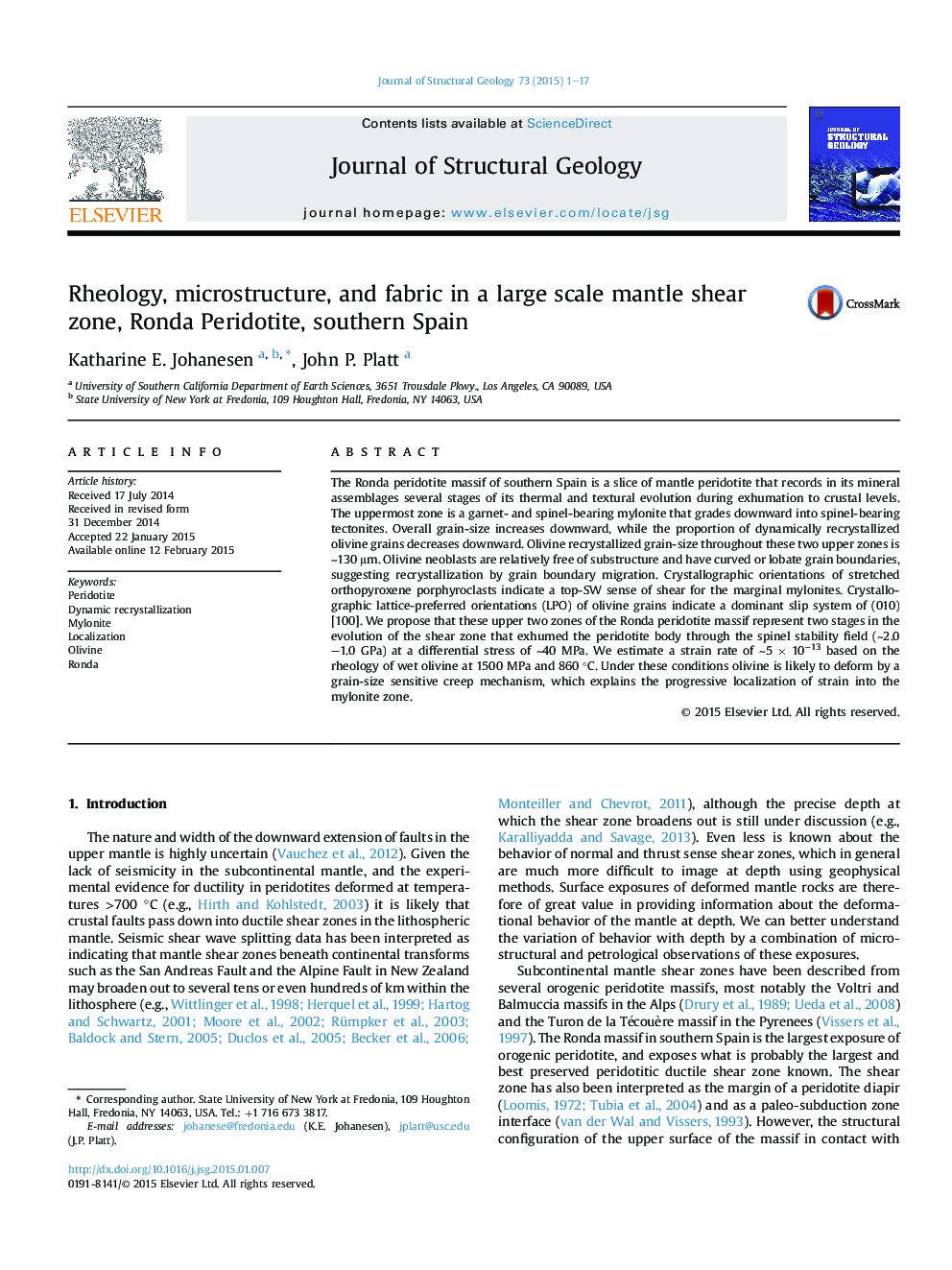| کد مقاله | کد نشریه | سال انتشار | مقاله انگلیسی | نسخه تمام متن |
|---|---|---|---|---|
| 4732995 | 1640507 | 2015 | 17 صفحه PDF | دانلود رایگان |

• The upper margin of the Ronda peridotite is a large-scale mantle shear zone.
• The tectonite has fewer recrystallized grains and represents an early process zone.
• The 4 km wide tectonite zone narrowed and localized to ∼500 m wide mylonite zone.
• Recrystallized grain-size in upper two zones is ∼130 μm; paleo-stress is ∼40 MPa.
The Ronda peridotite massif of southern Spain is a slice of mantle peridotite that records in its mineral assemblages several stages of its thermal and textural evolution during exhumation to crustal levels. The uppermost zone is a garnet- and spinel-bearing mylonite that grades downward into spinel-bearing tectonites. Overall grain-size increases downward, while the proportion of dynamically recrystallized olivine grains decreases downward. Olivine recrystallized grain-size throughout these two upper zones is ∼130 μm. Olivine neoblasts are relatively free of substructure and have curved or lobate grain boundaries, suggesting recrystallization by grain boundary migration. Crystallographic orientations of stretched orthopyroxene porphyroclasts indicate a top-SW sense of shear for the marginal mylonites. Crystallographic lattice-preferred orientations (LPO) of olivine grains indicate a dominant slip system of (010)[100]. We propose that these upper two zones of the Ronda peridotite massif represent two stages in the evolution of the shear zone that exhumed the peridotite body through the spinel stability field (∼2.0–1.0 GPa) at a differential stress of ∼40 MPa. We estimate a strain rate of ∼5 × 10−13 based on the rheology of wet olivine at 1500 MPa and 860 °C. Under these conditions olivine is likely to deform by a grain-size sensitive creep mechanism, which explains the progressive localization of strain into the mylonite zone.
Journal: Journal of Structural Geology - Volume 73, April 2015, Pages 1–17